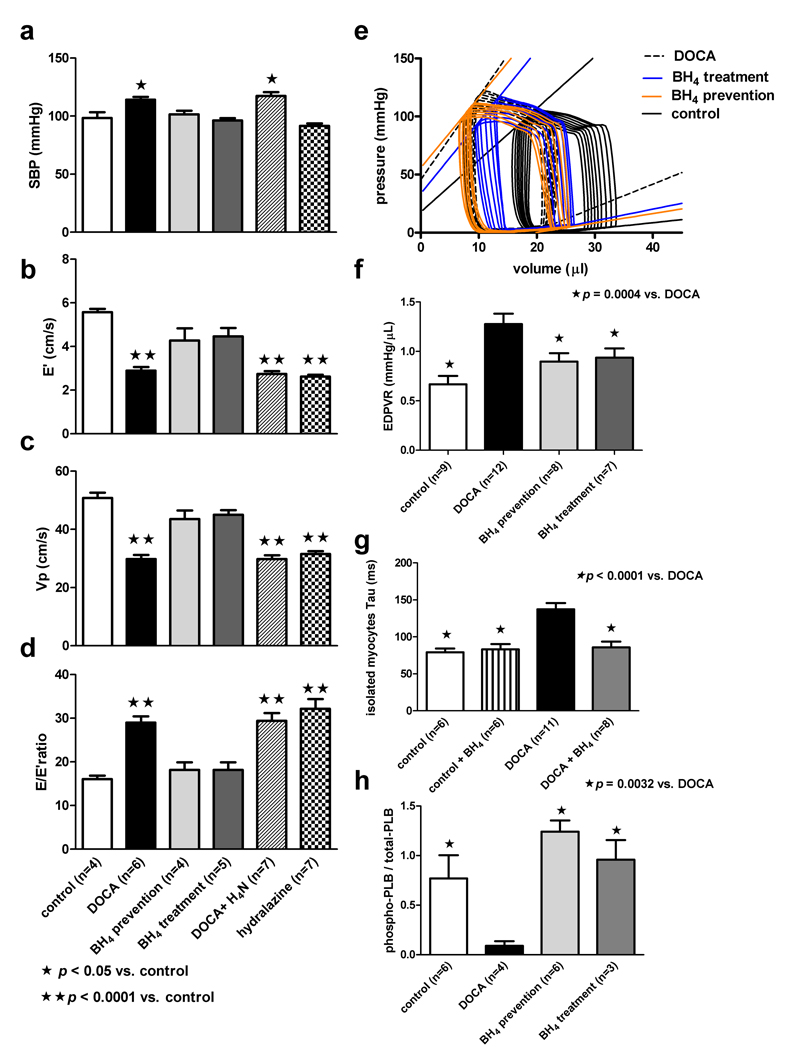Figure 4.
Tetrahydrobiopterin (BH4) prevents or reverses diastolic dysfunction. Panel a: DOCA mice treated with BH4 or hydralazine (days 12–24) show a reduction in systolic blood pressure (SBP) to levels observed in control animals. Treatment with tetrahydroneopterin (H4N; days 12–24), an enzymatically inactive analog of BH4 with equivalent antioxidant properties, has no effect on blood pressure in hypertensive DOCA mice. Panels b, c, and d: Assessment of diastolic function using echocardiography: E’ (early septal mitral annulus velocity measured with tissue Doppler imaging), Vp (left ventricular inflow propagation velocity interrogated with color M-mode Doppler) and E/E’ ratio show BH4, but not H4N or hydralazine, prevents or reverses diastolic dysfunction in hypertensive DOCA mice. Panel e: Sample pressure-volume loops obtained during inferior vena cava occlusion demonstrate the EDPVR and ESPVR in control-, DOCA-, and BH4-treated mice.Panel f: The mean EDPVR is steeper in DOCA mice versus control, BH4 prevention, and BH4 treatment groups.Panel g: Isolated myocytes from DOCA mice have a prolonged relaxation constant (τ) compared to control animals. The addition of exogenous BH4 to isolated DOCA myocytes normalizes relaxation kinetics. Panel g: DOCA mice have a reduced phosphorylated to total PLB ratio compared to control, BH4 prevention, and BH4 treatment groups.

